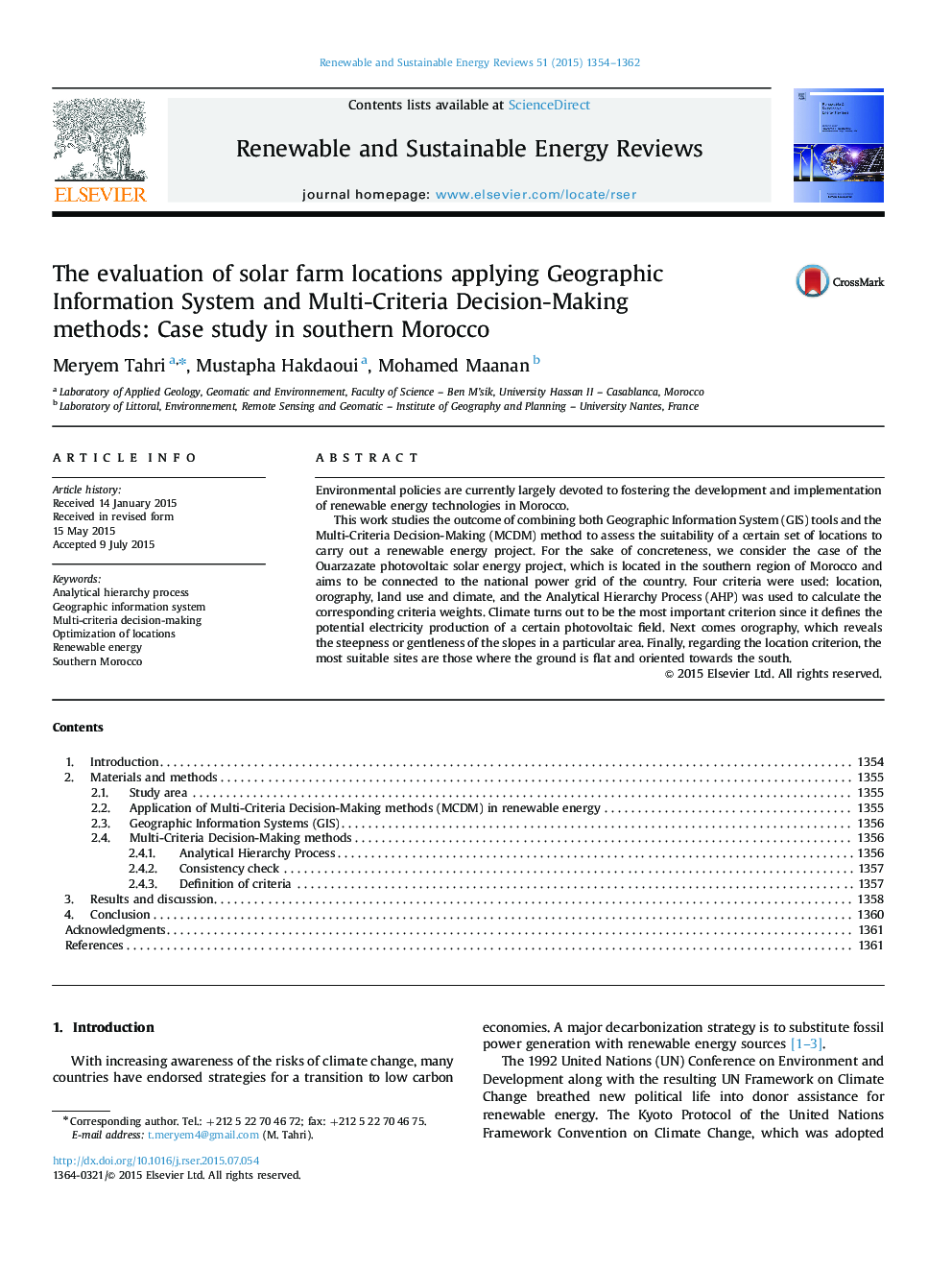| Article ID | Journal | Published Year | Pages | File Type |
|---|---|---|---|---|
| 8116001 | Renewable and Sustainable Energy Reviews | 2015 | 9 Pages |
Abstract
This work studies the outcome of combining both Geographic Information System (GIS) tools and the Multi-Criteria Decision-Making (MCDM) method to assess the suitability of a certain set of locations to carry out a renewable energy project. For the sake of concreteness, we consider the case of the Ouarzazate photovoltaic solar energy project, which is located in the southern region of Morocco and aims to be connected to the national power grid of the country. Four criteria were used: location, orography, land use and climate, and the Analytical Hierarchy Process (AHP) was used to calculate the corresponding criteria weights. Climate turns out to be the most important criterion since it defines the potential electricity production of a certain photovoltaic field. Next comes orography, which reveals the steepness or gentleness of the slopes in a particular area. Finally, regarding the location criterion, the most suitable sites are those where the ground is flat and oriented towards the south.
Keywords
Related Topics
Physical Sciences and Engineering
Energy
Renewable Energy, Sustainability and the Environment
Authors
Meryem Tahri, Mustapha Hakdaoui, Mohamed Maanan,
